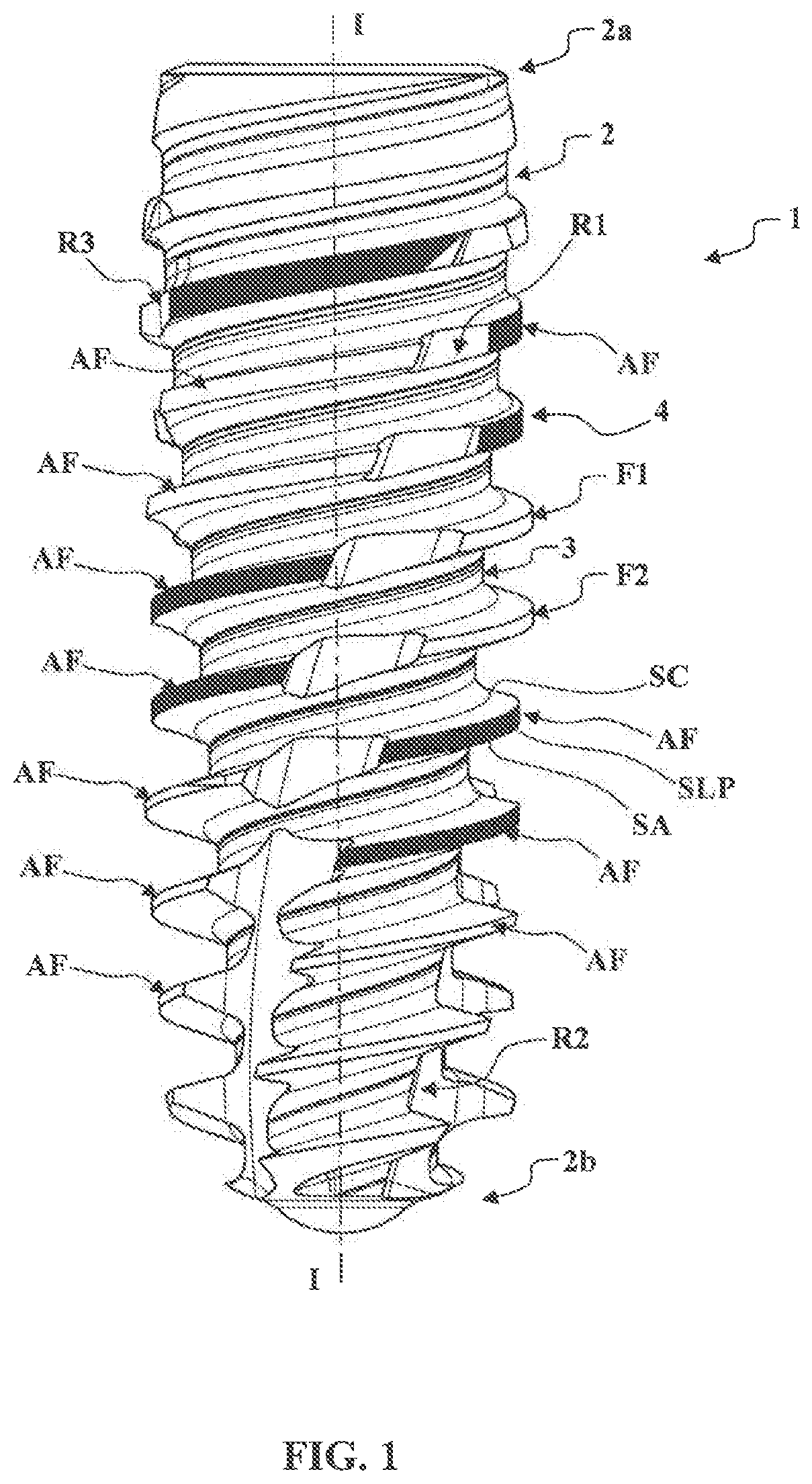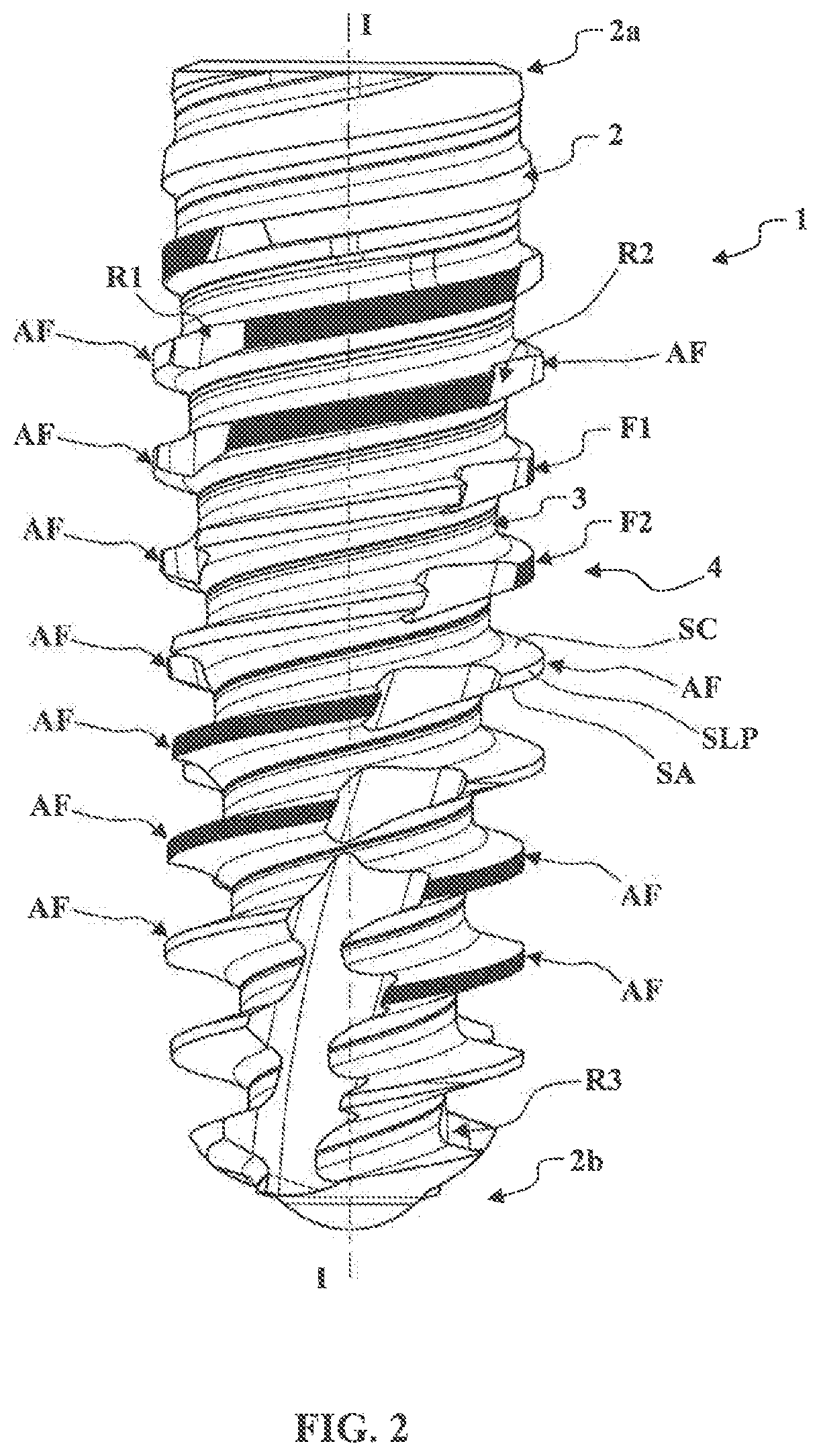Improved self-tapping dental implant
a dental implant and self-tapping technology, applied in dental implants, dental surgery, medical science, etc., can solve the problems of time-consuming and delicate use of a tap, less easy compression of the latter by the bone density, and a much higher screwing torque for dental implants to penetra
- Summary
- Abstract
- Description
- Claims
- Application Information
AI Technical Summary
Benefits of technology
Problems solved by technology
Method used
Image
Examples
Embodiment Construction
[0042]FIGS. 1 to 7 illustrate a particular embodiment of a dental implant 1 according to the invention.
[0043]As is illustrated in FIGS. 1 to 5, the dental implant 1 comprises an implant body 2 extending along a longitudinal axis I-I between a coronal end 2a and an apical end 2b. The implant body 2 has a core 3, along which there extends a helical threading 4 with at least one thread. In this case, the threading 4 here comprises two threads F1 and F2.
[0044]In FIG. 5, broken lines have been used, to illustrate the outer envelope 5 of the implant body 2 or envelope of the peripheral lateral surfaces of the threads F1 and F2. The envelope of the core 3 has also been illustrated by means of broken lines. It can thus be seen that the implant body 2 comprises five segments T1 to T5 from its coronal end 2a to its apical end 2b.
[0045]In the segment T1, the core 3 is substantially cylindrical, while the threading 4 is conical with a taper oriented toward the coronal end 2a. The height of the...
PUM
 Login to View More
Login to View More Abstract
Description
Claims
Application Information
 Login to View More
Login to View More - R&D
- Intellectual Property
- Life Sciences
- Materials
- Tech Scout
- Unparalleled Data Quality
- Higher Quality Content
- 60% Fewer Hallucinations
Browse by: Latest US Patents, China's latest patents, Technical Efficacy Thesaurus, Application Domain, Technology Topic, Popular Technical Reports.
© 2025 PatSnap. All rights reserved.Legal|Privacy policy|Modern Slavery Act Transparency Statement|Sitemap|About US| Contact US: help@patsnap.com



